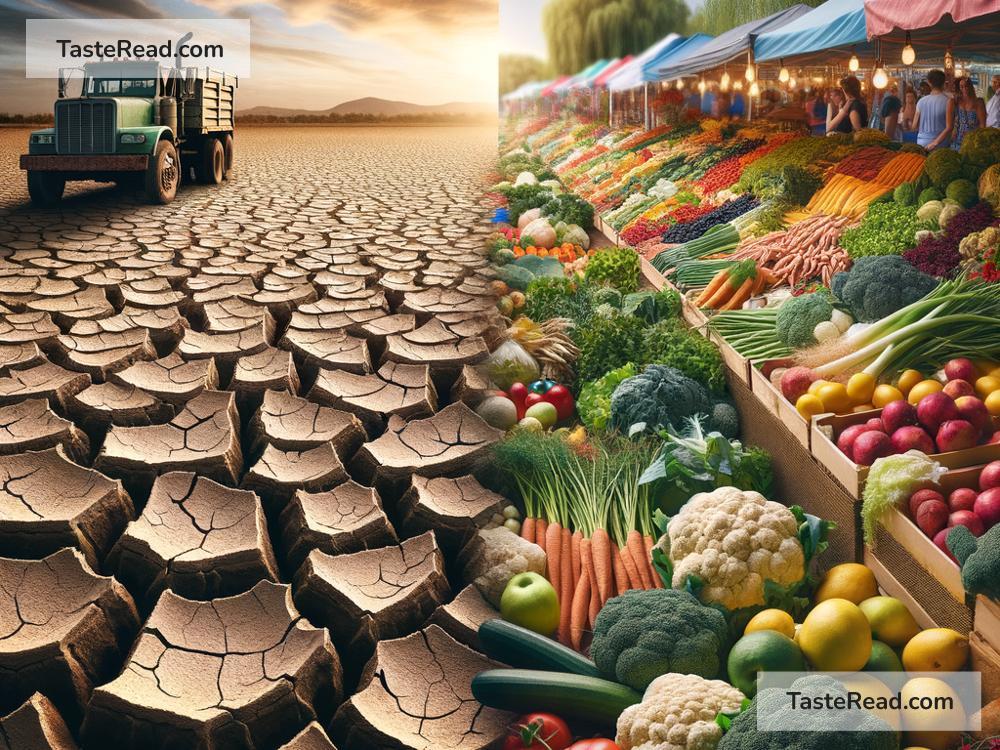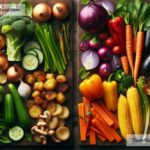The Impact of Climate Change on Food Security: A Growing Concern
Climate change is an issue that affects every corner of our planet. Rising temperatures, changing weather patterns, and unpredictable natural disasters are becoming more common, and they are having a serious impact on food security—the ability of people to have enough healthy and safe food to eat at all times. This blog will explore how climate change is affecting food security, why it matters, and how we can work to address these challenges.
What is Food Security?
Food security means everyone has access to enough nutritious food to lead a healthy life. It includes making sure food is affordable, available, and that people can access it easily. However, food security isn’t just about having enough food; it also requires the food to be high quality, safe to eat, and culturally appropriate based on people’s dietary needs. When food security is threatened, hunger, malnutrition, and poverty increase.
How Climate Change Impacts Food Security
Climate change is disrupting the systems that produce food, making food security harder to achieve. Below are some of the major ways it is affecting the food we rely on:
1. Extreme Weather Events
The weather is becoming more unpredictable and extreme due to climate change. Droughts, floods, hurricanes, and heatwaves are occurring more often and with greater intensity. These events damage crops, farmland, and livestock, reducing the amount of food that farmers can produce.
For instance, if a country experiences a drought, crops like wheat, rice, or corn cannot grow properly because they don’t get enough water. At the same time, floods can wash away entire fields, leaving farmers with nothing to harvest. These events create an unstable food supply, causing shortages and driving up food prices.
2. Changes in Growing Seasons
As temperatures rise, the seasons when crops are usually grown are shifting. Some regions are becoming too hot or dry to grow certain crops, while others are experiencing shorter growing seasons. Farmers who rely on predictable weather to plant and harvest crops are struggling to adapt.
For example, in areas where farming depends on rainfall, irregular rain patterns are making it harder to know when to plant seeds. If the seasons become too unpredictable, some crops may not survive, resulting in lower food production.
3. Loss of Biodiversity
Climate change is threatening the natural environments where many plants and animals live. As temperatures rise and ecosystems change, certain species of crops and livestock may struggle to survive. Losing these species reduces biodiversity—the variety of life on Earth—which is essential for a healthy food system.
If we lose crop varieties that can withstand tough conditions, we will have fewer options to grow food in areas affected by climate change. This reduces food availability and may lead to hunger in regions already facing food shortages.
4. Threats to Fisheries
Climate change is also affecting oceans, rivers, and lakes, where much of the world’s food comes from. Rising ocean temperatures and pollution are killing fish and marine life, while changes in sea levels are disrupting coastal fishing communities. As fish populations decline, millions of people who rely on seafood as their main food source are at risk of losing access to this vital resource.
5. Impact on Farmers
Small-scale farmers—especially in developing countries—are among the most affected by climate change. These farmers often rely on traditional farming methods, limited resources, and natural rainfall to grow their food. When climate change disrupts their ability to produce crops, their families and communities face higher risks of hunger and poverty.
Why This Matters
Climate change and food security are deeply connected, and the consequences are far-reaching. When food becomes scarce or expensive, the most vulnerable populations—such as children, the elderly, and people in poverty—are hit the hardest. Hunger leads to malnutrition, which can cause serious health problems, especially in developing countries.
Food insecurity can also create social and economic challenges. When people don’t have enough food, conflicts over resources can arise, and communities struggle to develop and grow. Cities may face rising migration from rural areas, where farming becomes impossible due to harsh conditions. Addressing food security is not just about feeding people—it’s about ensuring a stable, healthy future for everyone.
What Can Be Done?
While the relationship between climate change and food security is complex, there are steps we can take to make a difference:
-
Adopting Sustainable Farming Practices: Farmers can use methods like crop rotation, agroforestry, and water conservation to adapt to changing conditions while taking care of the environment.
-
Investing in Technology: Scientists are developing drought-resistant crops and innovative farming tools that can help farmers grow food despite challenging weather conditions.
-
Reducing Greenhouse Gas Emissions: Governments, businesses, and individuals must work together to reduce emissions, slowing down climate change’s impact.
-
Promoting Education and Awareness: By teaching people about climate change and sharing resources, we create more informed communities that can take action and demand change.
-
Providing Financial Support: Organizations and governments can assist farmers affected by climate disasters, helping them recover and rebuild their livelihoods.
Conclusion
Climate change is one of the biggest challenges to global food security. It is affecting crops, livestock, fisheries, and the livelihoods of farmers who depend on these resources. To ensure everyone has access to enough nutritious food, we must act now. By embracing sustainable solutions, reducing emissions, and working together globally, we can protect our food systems and create a brighter future for generations to come.


